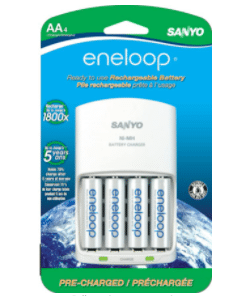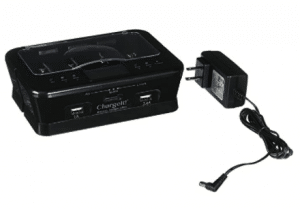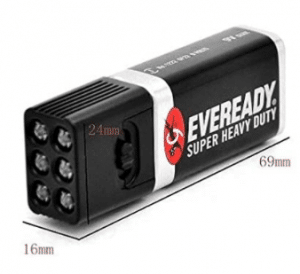Alkaline batteries are everywhere these days in 2023. This type of battery is one of the most popular items of a bug-out bag, too. You will find alkaline batteries all over – in remote controls, in cordless computer mice or cordless keyboards, in digital cameras, in LED flashlights, and many other household electronic devices. But here’s the thing – alkaline batteries (just like other types of batteries) are not forever – they die. The good thing is that there are rechargeable alkaline batteries that you can bring back to life using battery chargers. But what if you’re using standard alkaline batteries that are not made to be recharged? Can you recharge dead alkaline batteries? And if you can, how will you do it? Read this article to find answers to these questions and learn how to recharge alkaline batteries.
NOTE: The guide below won’t require any specialized knowledge or professional survival skills, or complicated survival gear items. However, if you’re no stranger to electrical equipment or had fun with DIY electronic projects as a kid, such relevant experience would be helpful.
What Are Alkaline Batteries?
Before we move to the main topic of recharging alkaline batteries, let’s refresh our memory and look at what alkaline batteries are in the first place.
There are several battery types. Some batteries use zink or ammonium chloride. Some use nickel-metal hydride and nickel-cadmium. Finally, their batteries use potassium oxide’s alkaline electrolyte. Such batteries are called alkaline batteries. There are two types of alkaline batteries: rechargeable or non-rechargeable. The difference (as it is evident from the names of the types) is that there are alkaline batteries that you can recharge using a battery charger, and there are ones that you can’t recharge and have to dispose of them as soon as they die. However, the latter statement is subject to question since, in the chapters below, we will show you the way to reanimate “dead” disposable alkaline batteries, so if you’re looking for a short answer to the question.
Can you recharge a dead non-rechargeable alkaline battery?
Basically, yes, you can. (But how? And that is the question we will answer in the chapters below.)
But for now, let’s stick with the plan and speak more about alkaline batteries.
As all preppers probably know, alkaline batteries vary in size due to the equipment used because different electronic devices have different battery compartment sizes. The most popular battery sizes are AA and AAA batteries. Traditionally, AA and AAA batteries are used for household equipment such as cordless headphones, remote controls, cordless computer accessories, etc. However, there are more alkaline battery sizes you may come across. In total, there are five sizes: AA, AAA, C, D, and 9 V size batteries. These are the batteries you may often see in everyday life.
What makes alkaline batteries so popular
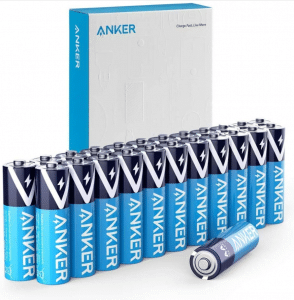
Alkaline batteries have a longer shelf life. This is a feature that chloride electrolyte, nickel-metal hydride, or nickel-cadmium batteries don’t have. For instance, you can store alkaline batteries for up to ten years – that is some shelflife, right?!
Another thing that makes both disposable alkaline batteries and rechargeable alkaline batteries so popular is that they serve quite longer than other batteries on the market. While there are no significant differences in the amount of power they provide, one alkaline battery will last longer than any of its counterparts – NiCad batteries, NiMh batteries, or zinc-oxide batteries.
Rechargeable alkaline batteries have an impressive number of recharge cycles. Basically, you can use a recharged alkaline battery more times than other rechargeable batteries.

Alkaline is a more affordable battery type. Plus, dead alkaline batteries are much more easily disposable. You can also use alkaline AA, AAA, C, D, and 9V batteries in low-temperature conditions, and they will still perform well.
Alkaline batteries are perfect to use with low-drain devices – the ones that require a small amount of electrical energy. Normally, you only use such devices from time to time. Such devices include a radio, remote control, etc. And the best thing is that alkalines won’t get old. Well, at least, not as quickly as NiMh cells, zinc-oxide batteries, or Ni-Cd batteries do.
Advantages of Alkaline Batteries
Even though this type of battery has its own downsides due to longer shelflife (alkaline batteries’ main advantage).
- The first thing the comes to mind is that alkalines have high internal resistance. What this means is that high internal resistance may cause an alkaline to heat up, resulting in a voltage drop.
- Another thing worth mentioning is that batteries may die faster than expected if you use new or recharged alkalines for devices that require a large amount of power supply at the start-up or need a lot of power during operation.
- Rechargeable alkalines don’t perform too well if you compare them to disposable alkalines.
However, even with the aforementioned downsides, alkalines are still big today and keep on meeting extensive use all over the world.
How to You Recharge Alkaline Batteries?

NOTE:
- For best results, you will need a special battery charger that is compatible with charging alkaline batteries. It is not recommended to recharge alkaline cells using a regular NiMh charger or a charger that was designed to recharge zinc-oxide or nicad cells.
When recharging rechargeable alkaline cells, you will have to keep in mind that recharged batteries will lose capacity with every recharge cycle. So the more times you recharge alkaline cells, the less capacity they retain. So while rechargeable alkaline batteries may have multiple recharge cycles, they will last shorter after each recharging process.
So that is how you recharge rechargeable alkalines. It’s quite simple, as you see. But what if you have a bunch of old alkaline batteries (disposable ones), and you need to charge them? Is it even possible?
The way to charge alkaline batteries
Well, as we said earlier, yes, you can technically recharge a dead battery. However, some might say that it’s not the best idea. And here’s why:
- First and foremost, a non-rechargeable battery can leak during recharging;
- Another thing to take note of is that while it’s possible to recharge “dead batteries,” the number of recharge cycles is quite limited. You may expect up to 10-12 cycles before a battery runs out of order terminally;
- Finally, you must only recharge disposable alkaline cells using a special battery charger designed for charging alkalines.
With all the information above, it’s time to move on with the topic and show you how you can recharge the most alkaline batteries. This is the most fun part of our guide.
Recharging Alkaline Batteries (Non-rechargeable)
The Equipment You Will Need
We’ll start with the list of equipment that you will need to recharge non-rechargeable alkaline cells:
- A bunch of presumably dead alkalines (obviously);
- A user-friendly battery tester;
- A battery charger for charging alkaline batteries (ONLY) – chargers for NiMH batteries and such won’t do;
- Test devices – i.e., household devices that you will test recharged alkaline batteries with.
As soon as you gather all the necessary stuff, you’re good to go. Now, let’s proceed with the preparation part.
The Preparation Part
To promote the best results of your survival preparation, follow our recommendations. First of all, you will need to gather all the batteries that you want to recharge.
Just a reminder, gather ONLY non-rechargeable batteries. Most likely, you will have a bunch of them lying in a cardboard box in your basement or in the attic. Most people choose to keep dead batteries to dispose of them later (or recycle them) since normally you can’t just throw a bunch of old batteries in a trashcan – it’s not too environment-friendly, right?
So get your box of dead alkalines and sort out the ones that leaked. Battery leakage occurs under various conditions. Most often, it happens when a battery stays unused inside a device for too long. While the device is not switched on, the battery will still check for the remaining power. This will lead to the battery’s wear out, which might result in leakage.
Old batteries, when stored for too long, can also leak:
- A leaked battery is unfit for recharging or repeated use;
- You can’t throw away a leaked battery – battery acid will poison soil and ground waters.
If you happen to find any leaking batteries in your collection of old alkalines, put them aside for further disposal. Keep in mind that when leaking, battery acid can touch other “healthy” batteries. So when you have removed leaked cells, take time to wipe the remaining cells with a piece of cloth to make sure they are clean and don’t have any battery acid left on them.
Find out if your batteries are still fit for charging
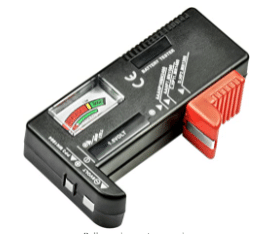
- If you have batteries of different sizes like AA batteries, AAA batteries, etc., look for a battery tester that will be fit for testing a variety of different size cells: AA, AAA, C, D, and 9V.
- As soon as you get the tester, you will need to check all the alkalines that you have. If you had collected a ton of old cells in your box, prepare for some routine of testing each and every battery in your collection.
- When testing batter voltage, you may find out that some of the batteries that you have are actually good as new, meaning they are fully charged according to the tester. But for some reason, they ended up in a box of “dead cells.” How come?
- Well, you’re not the only one to find that out. In fact, many people tend to dispose of actually fully functional batteries thinking they are no longer active. One of the most frequent reasons is that some devices may function poorly, leading users into thinking that it’s the batteries’ fault. When in reality, a device may not work properly for some reason.
Other reasons for improper work
Another common reason is the users being inattentive. Quite often, people use old and new batteries in the same device. When that happens, a device may stop working, and both or three batteries end up in a trash can (or a box for dead batts). Again, our advice is not to rush. In reality, one battery may be bad, and the other one or two of the set may still be fully charged and functional. So each time you’re putting batteries in a device, make sure you replace the entire set and not just adding one new battery leaving older ones unreplaced. When time passes, you will most likely forget which of the batts was the new one and which of them is an old one. As a result, both cells will end up extracted from the device and thrown in a recycle bin.
To prevent that (save money on buying new batteries each time), make sure you keep a battery tester near you. So the next time your wireless headset stops working, don’t be quick to change the whole set of batteries. First, test each batt – maybe only one of them is dead, and others are wonderful and still good to go.
Another thing we should point out is that some people may be careless enough to throw away rechargeable alkaline batteries. For example, maybe the last time you extracted a “dead” alkaline battery out of a device, you did not notice that the print on it said “rechargeable,” and you just put it into the box with other used-up batts.
The Charging Process
So when you’ve run the testing procedure and sorted out all the dead batts that cannot be charged, it’s time to do some charging, right? For that, you will need a special battery charger that will charge alkaline batteries.
As we said before, regular battery chargers that recharge batteries of other types won’t do. You will need to purchase a charger that will work with alkalines. However, most alkaline chargers will work fine for charging batteries of other types such as NiMH AA/AAA batts, NiCD cells, etc. Another tip is to look for a battery charger that will have several battery compartments to be able to charge alkaline batteries of different sizes like AA, AAA, C, D, and 9V.
Maximal Power Charger

The Maximal Power Charger is a versatile battery charger that will work with rechargeable batteries of different types, including alkaline ones. The Maximal Charger will charge NiMH batteries, NiCD batteries, and rechargeable alkaline batteries of all popular sizes. Plus, you can use Maximal Charger for charging disposable alkalines, as well. This is a quite budget-friendly model that gives the performance just like its more expensive counterparts.
This particular charger will let you charge different batteries separately, which is a very convenient option. To switch between different battery types, use a switch on the charger’s body. But note that you can’t recharge different types of batteries at the same time. But you can recharge alkaline batteries of different sizes simultaneously.
Another thing to take note of is that while using a recharger for rechargeable alkaline manganese batts is perfectly fine, recharging disposable alkalines is not quite usual. It’s not like we’re trying to frighten you or something, but you best be prepared for extreme cases like smoking or even battery explosion. We cannot stress enough how rare and exceptional such cases are, but you should always be prepared for anything – especially if you’re trying to recharge cheaper batteries. When during the recharging process, you will see smoke or smell something in the air, pull the charger’s plug from a socket.
Now let’s get down with the charging!
NOTE:
- As a reference, we will use the aforementioned MaximalPower alkaline battery charger.
The charger has an LCD display that shows the charging progress and five LED indicators (one for each charging slot). When you place batteries inside a charger, the LCD screen will show one of two messages. If the batts are OK for recharging, the message will read CHA (this means “charging”). If there is something wrong with a battery (or batteries), the message will read BAD (which obviously means “bad battery”). In the latter case, the charging will be impossible.
The LED indicators have three color modes: green, static red, and flashing red. The green light means the charging is complete. The static read mode means that the charging is in process. When any of the indicators begin to flash red, this means that something went wrong and the charging is impossible. Since each charging slot operates independently, the LED indicators may show all three signals at once.
As for the time needed to charge an alkaline battery fully, it depends on its size. For instance, charging an AA battery will take five hours. An AAA alkaline battery will be fully charged in two and a half hours. A C-batt will take six hours to recharge. D-battery will recharge in ten hours.
When the charging is complete, the indicators will turn green. If you choose to leave recharged alkaline batteries inside the device, it will switch to a so-called trickle charge mode. This means that it will stop actual recharging but will keep feeding small amounts of power to the batts to keep their capacity at an optimum level.
Can I leave batteries in the charger?
Some users would say that leaving batteries inside the charger for ten or twelve hours after the charging is complete results in a stronger charge. You may try this as well, comparing the battery voltage level of a battery right after the charging is complete to the recharged batteries that stayed in the charger for a longer period of time.
NOTE:
For more precise voltage measurements, you will need a more complex battery tester.
- Most chargers’ manuals would recommend charging only “fully-drained” batteries. However, if you insert a fully drained non-rechargeable alkaline battery into a charger, most likely, it will show the “BAD” message assuming the battery is “dead” and cannot be recharged.
- You should keep in mind that recharging disposable alkalines may lead to batt leakage. There are cases when recharged alkalines would leak some time after they were reanimated and kept unused. However, the link between recharging and leakage has not been fully proved.
- Finally, it is common for chargers’ manuals to say that non-rechargeable alkaline batts can be recharged for up to thirty times which is more than enough. But for best results and safety, we would recommend recharging disposable alkaline not more than ten times or so.
Testing
After charging your alkalines and testing them with a tester, you’re finally free to put them into one of the testing devices that you’ve prepared before. Those devices can be a CD player, remote control, wireless computer mouse, and LED light, or any other consumer electronics item.
What to expect?
So what are recharged alkaline cells good for?
They are best for use in low-power appliances such as LED lights, cordless computer mice and keyboards, remote controls. With these devices, recharged alkaline cells will work just fine lasting for impressive time periods.
For more power-hungry devices that need a regular power supply (wireless headphones, for instance), recharged alkaline batts are not the best choice. Normally, they would last for eight-twelve hours of non-stop use. At the same time, standard NiMh batteries would serve twice as long.
Recharged 9V-alkalines are a perfect match for tactical flashlights. They would last impressively long even with 24/7 use.
As an overall conclusion, charging non-rechargeable alkaline batteries is a good idea and a realistic task that will give a second life to your collection of old alkalines you believe are long dead and useless.
After all, it’s a great way to get some free batteries! Why buy a more expensive rechargeable alkaline battery set now when you can recharge some old disposable ones? The bottom line is don’t throw away old batteries – they still can serve you.
What battery brands to choose from?
Of course, not all alkaline batteries can be recharged since build quality, and other factors vary from brand to brand. From our own experience, we can say that one of the best choices is Duracell batteries. Duracell disposable alkalines recharge pretty well and last quite long if you use them for low-drain equipment.
Among other brands that produce both standard alkalines and rechargeable alkaline manganese are Pure Energy, AccuCell, and IGo. These three brands also produce quality chargers and related accessories.
A piece of advice
Finally, we would recommend keeping your batteries in order as one important survival hack. Don’t throw them around and always keep them in one particular place so you will always know where to look for new batts and where to store old ones. There are tons of storage cases for batteries of various sizes – go check them out.
Recharging Alkalines in a Nutshell
Let’s sum up the basic steps of how to recharge disposable alkalines:
- Sort out your old batteries – put aside all the unfit batts (regular ones, leaked ones, hearing aid batteries, cellphone batts, etc.). You only need disposable alkalines that retained their functional condition.
- Test the alkalines with a tester to see how much capacity they still have. Some alkalines may be totally dead – put them aside.
- Get yourself a special alkaline battery charger. Chargers for other types of batteries won’t do.
- When you have charged the alkalines, test them again. Use tester and testing devices (better use low-power ones).
The List of Equipment
In this section, we will list a number of devices you might want to take a look at. The list of survival and camping essentials includes chargers, testers, a batt storage case, and a LED flashlight as a perfect low-drain device for testing recharged batts.
1. Testers

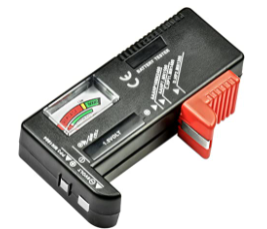
SE BT20 – a very convenient tester for testing AA, AAA, C, and D batteries.
2. Chargers
Most of us use rechargeable batteries for obvious reasons. If a rechargeable battery runs out, you don’t have to go to a radio shack to get a set of new ones. All you need is to put that thing in a charger and wait a few hours. So a versatile charger is something we recommend purchasing right now if we still don’t have one.
Maximal Power FC999
Maximal Power FC999 – this is one of our favorite models. This versatile charger has five independently working charging slots for various battery sizes. It has an LCD screen indicating the charging process and five LED indicators. It’s impressively fast – charging won’t take eternity which is a great feature. When the charging is complete, the device will automatically stop to prevent short circuits.
And more, this charger is a universal one – so you can not only charge alkalines but other types of rechargeables, as well. By the way, when looking for such kind of equipment, always go for universal models.
Sanyo Eneloop 1500 SuperPower Pack
Sanyo Eneloop 1500 SuperPower Pack – a high-quality, versatile charger that will work fine with a variety of different types and size batteries. The model has a bright LCD display to monitor the charring process.
Chargelt Battery Station
Chargelt Battery Station – this device is quite the same as the previously mentioned charger. Still, it also comes with two USB inputs allowing you to charge a variety of mobile devices. Plus, this charger will also check your batteries to let you know if they can be recharged or not.
Solar 11-in-1 Charger
Solar 11-in-1 Charger – this is a solar charger that will charge batteries of all four basic sizes from AA to D.
Flashlight
Blacklight LED Flashlight – there is no way to describe how LED flashlights are popular these days. They are compact and bright as hell. These little fellas are equally good for searching car keys in a dark parking lot and for scaring off offenders. This particular LED light is one of the most popular around. It is deemed a low-power device and requires a 9V battery to operate.
Storage case
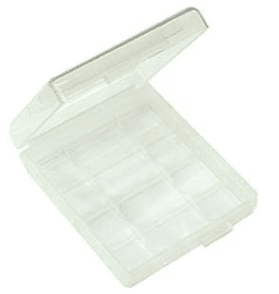
Conclusion
It is a common idea that you cannot recharge non-rechargeable batteries. And for most battery types, this statement is true. However, there is a way to charge disposable alkaline batts. Even though you may come across technical restrictions against it. Even manufacturers don’t recommend charging alkalines that were not designed as rechargeable in the first place. But in reality, it is possible if properly done.
What you need is a collection of old disposable alkalines, a voltage tester, and a batt charger. Recharging “dead” alkalines will not take any sort of professional knowledge. You don’t need to be a guru of electronics to be able to sort out leaked batteries, pick the ones that look fine, and put them into a charger. It will only take from five to ten hours for the batteries to fully recharge (depending on what size they are), and you’re good to go.
Of course, the fact that you can actually reuse reanimated alkalines does not mean that you won’t ever have to buy new ones. It is only rational to have a set of fresh batts. But as long as a bunch of old batteries is all that you have at the moment, recharging them is perfectly normal.
Frequently Asked Questions
Can regular alkaline batteries be recharged?
The answer is yes. You can actually recharge regular alkalines that were not designed as rechargeables. The whole procedure will take using proper equipment – a batt charger that only charges alkalines such as the Pure Energy or the MaximalPower charger. No other charger type will do.
When preparing to recharge regular alkalines, make sure the batts don’t have leakage. Leaked batteries must not be recharged – it may not be safe. But in the first place, a leaked battery is of no use at all.
What happens if you recharge alkaline batteries?
Normally, you would come across restrictions against recharging regular alkalines – the procedure is not considered a traditional practice. Commonly, as with other non-rechargeable, during the recharging process, alkalines can “explode” due to the gas build-up as a result of power feed. However, in reality, people manage to charge alkalines if the batts are not fully dead successfully. Before charging a battery, you must first check how much capacity it still has. If the tester shows none – don’t try to revive the battery.
What happens if you try to recharge regular batteries?
If you try to recharge a regular battery that was not designed for it, then it will gradually heat up during the process. Gas will build up inside, resulting in growing internal pressure. Then the seals of the canister will break, and battery acid will leak out of the battery. In some cases, a regular battery will explode during recharging.
How to recharge non-rechargeable batteries?
Basically, you can’t recharge a non-rechargeable battery. The only type of cells that can be recharged is rechargeable one (hence the name). If you try to recharge a non-rechargeable cell, it will leak, messing up your charger. In the worst case, a non-rechargeable cell will explode during recharging. However, the only type of non-rechargeable batts that people often try to recharge is an alkaline battery. Although it’s quite easy to recharge them, most alkaline battery makers don’t recommend that for safety reasons.
Why can alkaline batteries not be recharged?
You can only try to recharge an alkaline battery if it still has some of its capacity left. If the battery is completely dead – i.e., it has no capacity in it – then recharging will not be successful. To make sure that a battery is fit for recharging, you will need to see how much capacity it retains using a tester – a special device for checking voltage. If a tester shows that there is no capacity left in an alkaline battery, you will not be able to recharge it. The same goes for a leaked battery that has a damaged canister and therefore is completely useless.

